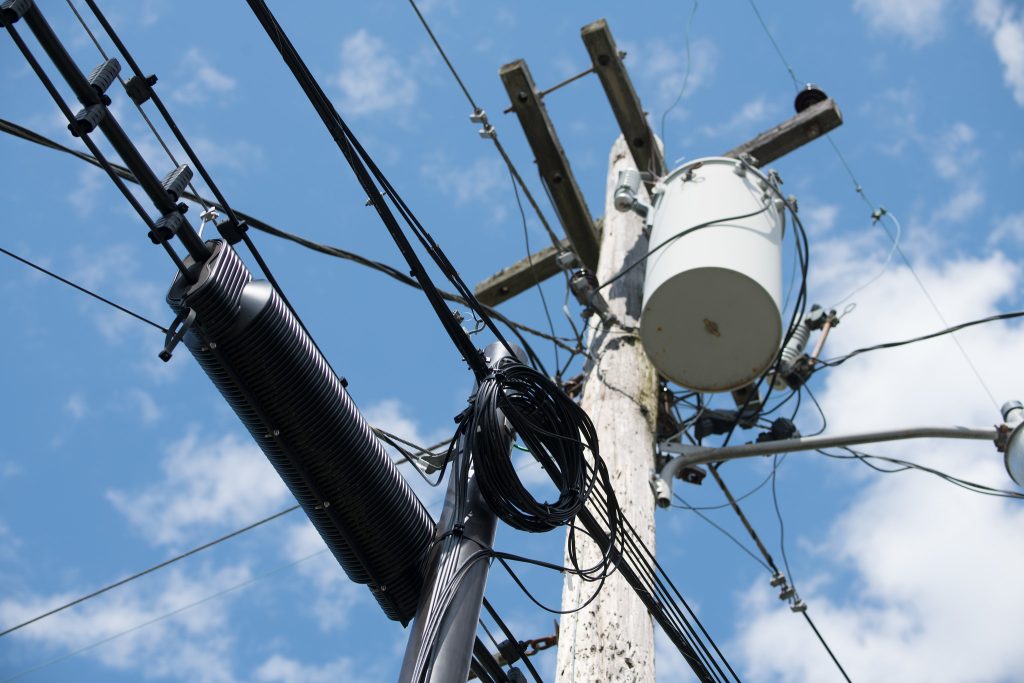The farm bill is wide-ranging legislation that sets funding and directs priorities for a variety of federal food consumption and production programs in the U.S. — plus, economic development programs aimed at improving broadband access and providing small business loans, among other things, in rural areas.
Congress usually debates and renews the farm bill every five years. The first farm bill was passed in 1933, with 18 farm bills having been passed in all. The most recent farm bill passed as the Agriculture Improvement Act of 2018 and it expires at the end September, the end of the federal fiscal year.
Legislators are making the case for the next farm bill to include funding that supports the interests of their constituents, as well as lobbying and advocacy groups. To help guide journalists in coverage of those debates, The Journalist’s Resource is taking a look at academic research on three pillars of farm bills: SNAP, environmental conservation and rural development.
The research featured in this miniseries can inform the questions that journalists at local, regional and national outlets ask of federal lawmakers.
This week, we’re focusing on rural development.
Rural development programs aim to spur business development and improve rural quality of life. These programs directly affect the economic health of rural areas in real ways, such as by providing small businesses with access to loans and funding infrastructure for high-speed internet connections.
There are more than a dozen rural development programs that are part of the farm bill.
“The United States Farm Bill is a sprawling, complex piece of omnibus legislation flying largely under the public radar,” write the authors of a May 2020 paper published in the journal Renewable Agriculture and Food Systems. “It influences eaters, growers, land and water, rural, urban and suburban communities alike, across the country and across the world.”
Rural development programs make up a small fraction of the overall farm bill budget, and funding is largely discretionary. That means the farm bill gives Congress the ability to appropriate a maximum amount for these programs each year. Congress can later change those yearly funding caps.
Two notable rural development programs that academic researchers have studied deal with expanding broadband access, administered by the Rural Utilities Service, and federally guaranteed business loans through the Rural Business-Cooperative Service.
“Without a reliable internet connection, precision agriculture just doesn’t work,” Sen. John Thune of South Dakota said in a statement in March. “And next-generation precision ag technologies will need stronger connectivity.”
The Rural Business-Cooperative Service had a program-level budget of $2.5 billion for the fiscal year ending on Sept. 30, while the Rural Utilities Service had $10.5 billion, according to a recent U.S. Department of Agriculture budget report.
Those billions represent, “the gross value of all financial assistance USDA provides to the public,” through those programs, according to the report.
Recent research finds programs that expand broadband access and provide federally guaranteed loans are associated with increased local wages, reduced risk that small businesses will fail, and other findings featured in the research roundup below.
Under the federal loan guarantee program, the federal government insures 80% of the amount of a loan made by a bank or credit union. The goal is to encourage and enable capital needed for rural entrepreneurs to start and grow their businesses.
The way the federal government defines “rural” varies by program, but population counts are “the primary factor used in rural definitions to determine eligible rural areas,” according to an April 2023 report from the Congressional Research Service.
For firms to qualify for the business loan programs, they need to do business in a town or other area with fewer than 50,000 people. USDA grants and loans for utility companies to build out broadband service are for areas with fewer than 20,000 people.
About 14.5 million people lack broadband, and about 11 million of them live in rural areas, according to the Federal Communications Commission’s most recent estimate, published in January 2021.
The FCC defines broadband as download speeds of at least 25 megabits per second. Critics have contended that rural connections may inconsistently reach that speed but still count as broadband, indicating that the number without reliable broadband could be higher. The FCC has used the 25 mpbs benchmark since 2015. In an April 2023 report, the Government Accountability Office found that from 2014 to 2021, there have been “inconsistencies in the scope of FCC’s analysis of the benchmark speed and in the explanation of FCC’s rationale for updating or not updating the benchmark.”
A strong internet connection is a necessity for carrying out day-to-day business for most firms, but it’s particularly important during times of crisis. A September 2023 paper in the Journal of Agricultural and Resource Economics links every 1 percentage point increase in broadband access in rural counties with $20 more in per capita payments from the Coronavirus Food Assistance Program, which provided financial assistance to agricultural producers during the peak of the COVID-19 pandemic.
“In addition to the unprecedented size of the disaster relief program, CFAP was also unique in that it was the first farm support program that allowed producers to enroll through an online portal rather than in person through a local Farm Service Agency,” the authors write.
Keep reading for more insights on what academic research says about rural development programs aimed at expanding broadband access and guaranteeing loans to businesses.
Research roundup
The Impact of USDA’s Business and Industry Loan Guarantee Program on Tax Revenue in Oklahoma Communities
Ty Rope Smith and Brian Whitacre. Community Development, January 2021.
The study: The authors explore the relationship between farm bill programs aimed at rural economic improvement and sales tax revenue, an “often-overlooked component of effective rural development,” they write. The authors analyze retail sales tax data in 57 municipalities in Oklahoma with fewer than 50,000 people that charged sales tax from 2005 to 2015 — along with data on businesses in those municipalities that received loans insured by the federal Business and Industry Loan Guarantee program.
The findings: Guaranteed rural business loans are associated with a positive and statistically significant effect on retail sales — but this effect only held for when the national economy was doing well, from 2005 to 2010. The authors did not find an association between these loans and improved retail sales from 2010 to 2015, years overlapping much of the slow economic recovery from the Great Recession.
The authors write: “The results also offer strong guidance that policymakers should stay the course over a long time horizon since such downturns cannot be predicted in advance. These findings have implications for future policy evaluation efforts: differing underlying economic conditions can impact evaluation results, and should be considered as an important component of the broader evaluation.”
Stimulating Innovation: Statutory Influence on Electric Cooperative Telecommunications Innovation
Jamie Greig. Journal of Information Policy, May 2020.
The study: The author explores bureaucratic barriers preventing electric service cooperatives, which largely serve rural areas, from also offering broadband internet.
Electricity cooperatives are owned by customers, and profits are reinvested into the cooperative — for example, to maintain or expand infrastructure. There are more than 900 such cooperatives in 47 states. Many exist to distribute electricity from power grids to homes, businesses and agricultural producers in small towns and rural counties.
Nearly six dozen of those electricity cooperatives also provide broadband access, most of them since 2010, after federal legislation put $7.2 billion toward expanding rural broadband. The 2014 farm bill reauthorized rural broadband loan and grant programs, while the 2018 farm bill did the same and allowed Congress to appropriate another $350 million toward expanding rural broadband.
State laws may prevent electricity cooperatives from offering broadband. For example, in Montana and Minnesota, broadband licenses for publicly regulated utilities are only allowed in areas without competing private firms. At the time of the study, 34 states had laws stating electricity cooperatives could form primarily to provide energy services, without explicitly allowing them to provide internet.
The author collected survey responses from officials at a random sample of 210 electricity cooperatives to explore whether state laws and regulations prevent cooperatives from expanding into telecommunications.
The findings: Nearly 18% of respondents said their electricity cooperatives offer broadband, while a little over one-third said they would in the future. Some 40% were unsure, while 5% said they did not plan to offer broadband.
Almost all respondents — 95% — identified costs to members and general investment costs as the biggest barriers to offering broadband. Nearly two-thirds said laws were a barrier to expanding into broadband, while a little over half identified regulations as an issue. The author identified only eight states that have updated their laws “to reflect the emergence of electric cooperatives as advanced telecommunications providers.”
The author writes: “This analysis shows that in the majority of states, telecommunications service offerings are not being externally stimulated by statute,” meaning most states do not have laws allowing or encouraging electricity cooperatives to offer broadband. “The results show that statutory language is affecting electric cooperatives’ decision to offer broadband service to their members. It also shows that the lack of updated statutory language to reflect a changing industry could reflect the lack of dialogue and action within the legislative environment that these entities operate.”
The Impacts of the USDA Broadband Loan and Grant Programs: Moving Toward Estimating a Rate of Return
Ivan Kandilov and Mitch Renkow. Economic Inquiry, December 2019.
The study: The authors examine the relationship between local wages and three rural broadband development programs that ran at various times from 1997 to 2007:
- A pilot loan program that made $180 million in loans to rural telecommunications providers in 2002 and 2003.
- The Community Connect Broadband Grant program, which has operated since 2002 and targets rural areas without broadband service of at least 25 Mbps.
- The current broadband loan program, enacted as part of the 2002 farm bill.
They restrict their sample to zip codes with fewer than 20,000 people across the 37 states that received at least one broadband loan or grant during the period studied.
The authors filed a freedom of information request to obtain names of counties that received a loan or grant, plus information on the size and timing of the funding. They then analyzed how average wages in the county changed after the broadband loan or grant.
The findings: The first two programs — the pilot and the Community Connect grants — did not affect local payrolls. But, for the current program, the authors associate every $1 increase in loans per capita with a 92-cent increase in yearly payroll per worker.
The authors note that it is difficult to say definitively from their study whether the benefits of the current broadband program outweigh the costs. For example, the data available for their analysis on payrolls don’t encompass people who are self-employed, nor does the data include potential higher home values related to better broadband access. Public services, such as health and education, would also likely be improved with broadband, but those effects are not captured in the analysis. In other words, there are outcomes that are difficult to quantify.
The authors write: “There is a long tradition of the federal government underwriting the costs of universal service provision, dating back to the implementation of Rural Free Delivery of mail in the late 1800s, and continuing on through Rural Electrification Administration subsidization of extending electrical service and telephone service into rural areas … Presumably, such investments reflected an assessment by policymakers that the public goods created by deployment of such integrative infrastructure were sufficiently large to outweigh the relatively steep costs of providing communication services to remote consumers of those services.”
Rural Business Programs and Business Performance: The Impact of the USDA’s Business and Industry Guaranteed Loan Program
Anil Rupasingha, Daniel Crown and John Pender. Journal of Regional Science, December 2018.
The study: The authors look at establishment and exit data on 1,665 businesses in rural counties across the country from 1990 to 2013 that received federally guaranteed loans. They assess whether participating in the Business and Industry Loan Guarantee program helps reduce the risk that a business will fail. For comparison, these businesses were matched with similar businesses founded in the same year in the same state, but that did not receive guaranteed loans.
The findings: Every $100,000 worth of guaranteed loans is associated with a 5% smaller risk that a business will fold within two years of receiving the loan, the authors find. After six years, every $100,000 is associated with a 2% better chance a firm will still exist. Firms also slightly increased their payrolls, by about 4%, on average, in the two years after receiving a loan. Nearly 9 in 10 businesses in the study that received a guaranteed loan were standalone firms — they were not part of a larger business with multiple locations or divisions.
The authors write: “Since the program loans can be used for investment in building, machinery, and equipment, it is conceivable that the loan investments were directed to new technologies resulting in increased productivity.”
Broadband’s Relationship to Rural Housing Values
Steven Deller and Brian Whitacre. Papers in Regional Science, May 2019.
The study: Does broadband access increase home values? The authors explore this question with data from the Federal Communications Commission and Census Bureau survey data from 2016 on home values and broadband availability across 887 rural counties. They only include counties not directly next to a metropolitan area. Most of the counties studied are in the Great Plains, with overlap in Appalachia, the upper Midwest and northern Mountain West.
The findings: Average yearly income across the counties studied was $44,000, while the average home was worth about $100,000. About two-thirds of households had access to internet speeds of at least 25 Mbps. The authors find that every 10% expansion in geographical coverage of at least 0.2 Mbps is associated with average home values in the area increasing by $661. Effects on home values decline as speeds increase. For every 10% expansion of coverage of speeds of 25 Mbps, average home values increase by $232. Speeds over 100 Mbps have no association with home values.
The authors write: “As connectivity becomes prevalent, the question will likely switch from quantifying the value-added by broadband to focus on the disadvantage of not being connected. Indeed, many businesses and individuals would choose not to locate in an area where a reliable connection is unavailable.”
The Political Economy of the U.S. Department of Agriculture Rural Business-Cooperative Service
Josh Matti. Economic Development Quarterly, April 2019.
The study: The author uses data on grants and loans made from 2006 to 2014, across the 40 states where they were disbursed, to explore whether rural development funding through the Rural Business-Cooperative Service reaches those areas and business most in need — and how members of Congress on influential agricultural committees affect which areas get federal money.
The findings: Each state receives about $1.1 million in funding, on average, via the Rural Business-Cooperative Service, the author finds. Each senator on the overall federal budget appropriations committee is associated with an additional $1.1 million, on average, in rural development funding for the state they represent — a 100% increase. Each member of Congress on House or Senate agricultural committees is associated with a 50% funding increase, on average, the author finds.
The author uses the phrase “Congressional dominance,” which originated in a 1983 paper on the Federal Trade Commission, to describe the relationship between rural development and having a member of Congress in a position to influence funding.
The author writes: “The results indicate that factors that are supposed to determine the allocation of funding do not. Congressional dominance is a plausible mechanism helping to explain why federal rural development funds do not always reach the areas of greatest need.”
This article first appeared on The Journalist’s Resource and is republished here under a Creative Commons license.
Related
Read the full article here














